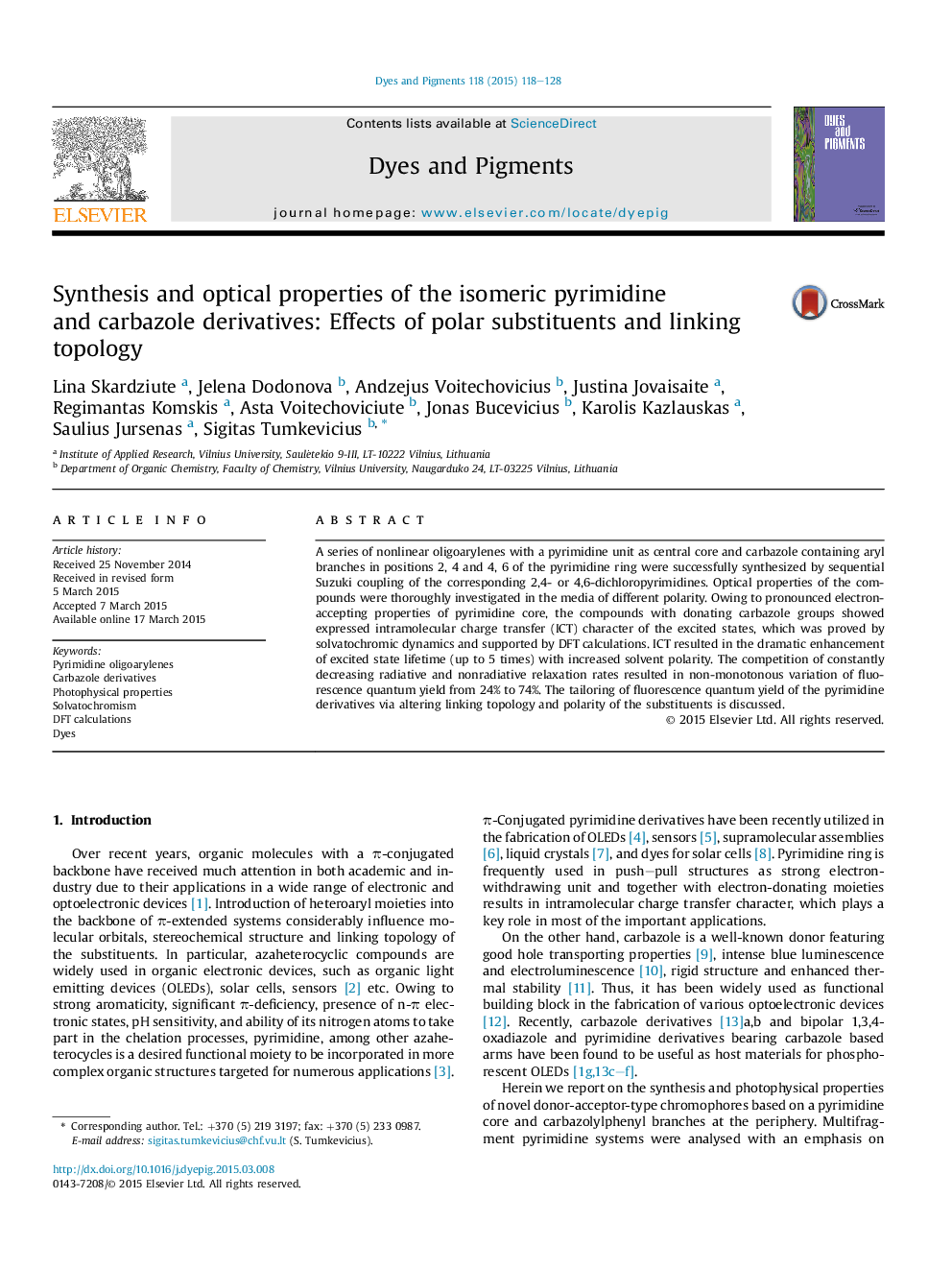| کد مقاله | کد نشریه | سال انتشار | مقاله انگلیسی | نسخه تمام متن |
|---|---|---|---|---|
| 175887 | 458926 | 2015 | 11 صفحه PDF | دانلود رایگان |
• Properties were studied by UV-vis absorption, photoluminescence and DFT methods.
• Compounds exhibited blue fluorescence and positive solvatofluorochromism.
• Fluorescence strongly depends on the linking topology of substituents.
• Emission efficiency is interpreted in terms of radiative and non-radiative processes.
A series of nonlinear oligoarylenes with a pyrimidine unit as central core and carbazole containing aryl branches in positions 2, 4 and 4, 6 of the pyrimidine ring were successfully synthesized by sequential Suzuki coupling of the corresponding 2,4- or 4,6-dichloropyrimidines. Optical properties of the compounds were thoroughly investigated in the media of different polarity. Owing to pronounced electron-accepting properties of pyrimidine core, the compounds with donating carbazole groups showed expressed intramolecular charge transfer (ICT) character of the excited states, which was proved by solvatochromic dynamics and supported by DFT calculations. ICT resulted in the dramatic enhancement of excited state lifetime (up to 5 times) with increased solvent polarity. The competition of constantly decreasing radiative and nonradiative relaxation rates resulted in non-monotonous variation of fluorescence quantum yield from 24% to 74%. The tailoring of fluorescence quantum yield of the pyrimidine derivatives via altering linking topology and polarity of the substituents is discussed.
Figure optionsDownload as PowerPoint slide
Journal: Dyes and Pigments - Volume 118, July 2015, Pages 118–128
